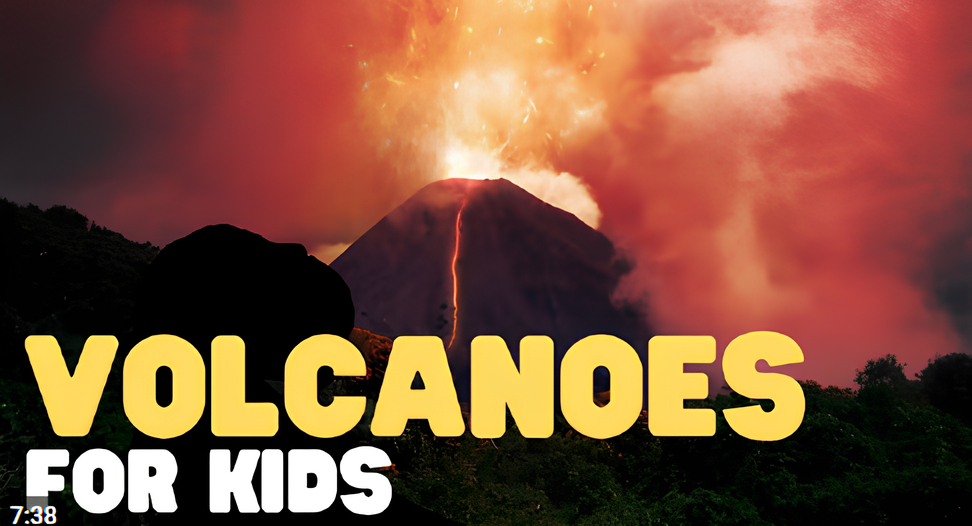Hawaii’s volcanoes are a spectacle of nature’s power. They shape the landscape, influence the climate, and impact the lives of those who call the islands home.
Yet, they are more than just natural wonders. They are a vital part of Hawaii’s cultural heritage and a significant driver of its economy.
Understanding the impact of Hawaii’s volcano eruptions requires a deep dive into various aspects. From the science behind the eruptions to their effects on the environment and local communities, each facet offers unique insights.
This article aims to provide a comprehensive view of Hawaii’s volcanic activity. It will delve into the most recent events, the response measures taken by authorities, and the ongoing research in this field.
Whether you’re a resident, a tourist, a student, or simply someone fascinated by the power of nature, this exploration of Hawaii’s volcanoes promises to be enlightening.
Join us as we journey into the heart of Hawaii’s volcanic landscape, understanding its past, present, and potential future.
The Geological Wonders of Hawaii’s Volcanoes
Hawaii’s volcanoes are both mesmerizing and dynamic. They are part of the Pacific Ocean’s Ring of Fire, a hotspot of volcanic activity. The islands themselves were formed by volcanic eruptions over millions of years.
The most notable volcanoes are Kilauea and Mauna Loa. Kilauea is one of the world’s most active volcanoes, offering continuous displays of volcanic power. Mauna Loa holds the title of the largest volcano on Earth, rising over 13,000 feet above sea level.
These colossal landforms owe their existence to a geological phenomenon called a hotspot. Here, hot, molten rock, or magma, rises through the Earth’s mantle, creating volcanic eruptions. Unlike other volcanoes tied to tectonic plate boundaries, Hawaii’s volcanoes result from this constant flow of magma.
The volcanic islands boast diverse landscapes, from barren lava fields to lush rainforests. Each eruption redefines parts of the land, creating new landforms and impacting ecosystems. Despite the destruction, these processes also form rich soil, nurturing unique flora and fauna.
The ongoing geological activity ensures that the islands continue evolving, both above and below the sea. This ever-changing environment highlights the complex interplay between destruction and creation within Hawaii’s volcanic landscape.
Historical Eruptions and Their Legacy
Hawaii’s volcanic history is rich and tumultuous. The islands have experienced countless eruptions over millennia. Some of these eruptions have been notably transformative, both geologically and culturally.
One of the most famous historical eruptions is the 1790 Kilauea event. It stands out as one of the deadliest in U.S. history, claiming numerous lives. This eruption left behind significant geological features, which still intrigue scientists and tourists alike.
The 1959 eruption of Kilauea’s Kīlauea Iki crater was another significant event. It produced a lava fountain nearly 1,900 feet high. This spectacle became a turning point in the scientific study of volcanic activity, drawing attention from researchers worldwide.
The legacy of these eruptions extends beyond the geological formations they create. They have shaped the local culture and are deeply embedded in Hawaiian traditions. Stories and myths are passed down through generations, reflecting the awe and respect these natural phenomena command.
Today’s Volcanic Activity: A Closer Look
Hawaii continues to be an epicenter of volcanic activity. The islands’ active volcanoes frequently erupt, drawing global interest. Recent eruptions have highlighted the power and unpredictability of these natural forces.
Today, Kilauea is one of the most closely monitored volcanoes. Its activity is frequent, and eruptions can start with little warning. Lava from Kilauea has reached residential areas, prompting urgent evacuations and widespread concern.
Mauna Loa, another of Hawaii’s iconic volcanoes, has also shown signs of unrest. Though less active recently, it remains under close watch due to its potential impact. Scientists continuously analyze data from these volcanoes to understand their behavior.
The United States Geological Survey (USGS) plays a crucial role in observing these volcanoes. With advanced technology, they provide real-time updates and warnings. This information helps protect Hawaii’s residents and visitors from the dangers of volcanic eruptions.
The Science Behind the Eruptions
Understanding the science of volcanoes starts with tectonic plates. Hawaii sits atop a volcanic hotspot, where magma rises from deep within the Earth. This molten rock erupts through the crust, creating the islands over millions of years.
The movement of these tectonic plates is relentless. As they shift, pressure builds within Hawaii’s volcanic system. When this pressure becomes too great, an eruption occurs, releasing lava, ash, and gases into the atmosphere.
Volcanic eruptions in Hawaii are influenced by the magma’s composition. The type of magma can affect the style and intensity of eruptions. Hawaii’s volcanoes typically produce fluid lava flows, but explosive events can occur as well.
Seismic activity often precedes volcanic eruptions. Scientists monitor earthquakes and ground deformation to predict potential eruptions. These signs are essential for early warnings, allowing people to prepare and protect themselves from volcanic hazards.
Monitoring and Predicting Volcanic Activity
Volcano monitoring is crucial for safety in Hawaii. The United States Geological Survey (USGS) plays a key role in this effort. They use a variety of technologies to track volcanic activity.
These tools include:
- Seismic sensors to detect earthquakes
- GPS stations to observe ground deformation
- Gas sensors to measure volcanic gases
Predicting eruptions requires analyzing data from these sources. Scientists can identify patterns that indicate an impending eruption. This information helps authorities issue timely warnings to the public, ensuring their safety and preparedness.
Environmental and Health Impacts of Volcanic Eruptions
Volcanic eruptions have significant environmental impacts. Lava flows can destroy homes and landscapes. They alter local ecosystems, displacing plants and animals.
The release of volcanic gases affects air quality. Sulfur dioxide is a major concern. It can form volcanic smog, or “vog,” which poses health risks.
Short-term effects are often severe. People with respiratory conditions might struggle to breathe. It is crucial to take protective measures like wearing masks.
Long-term impacts include changes to landforms and ecosystems. Volcanic soils, however, can enrich plant life over time.
Water sources can become contaminated. Ash and debris may affect freshwater supplies. Thus, conservation strategies are essential after eruptions.
The Human Toll: Evacuations and Displacement
Volcanic eruptions in Hawaii often force evacuations. When lava threatens homes, quick action is necessary. Residents face the loss of their property and history.
Displacement impacts community ties. People rely on shelters and aid for support. This disruption affects their daily lives and routines.
The psychological toll is significant. Experiencing volcanic eruptions can cause stress and anxiety. It’s vital to offer mental health support to affected individuals.
Economic and Cultural Effects on the Hawaiian Community
The economic impact of volcano eruptions in Hawaii is profound. Tourism, a major industry, often takes a hit. Fewer visitors lead to decreased revenue for local businesses.
Agriculture also suffers due to lava flows and ashfall. Crops may be destroyed, impacting local farms. This disruption affects the food supply and jobs.
Culturally, volcanoes hold a special place in Hawaiian tradition. They are seen as sacred, embodying powerful deities. Eruptions are a reminder of nature’s might and spiritual beliefs.
Communities respond with resilience and unity. Cultural festivals celebrate the volcanoes’ significance. These events strengthen social ties and cultural identity.
Living with active volcanoes influences the Hawaiian way of life. People adapt to the challenges presented. This adaptability fosters a unique sense of community and heritage.
Technological Advances in Volcano Monitoring
Technology plays a vital role in monitoring Hawaii’s volcanoes. Innovative tools enhance the understanding of volcanic activity. Seismic sensors detect shifts deep within the Earth.
Drones provide a closer view of active sites. They capture real-time data safely. This helps in assessing dangers without human risk.
Satellites offer a broader perspective. They track ash clouds and lava flows from space. This information is crucial for predicting potential threats. These advances improve emergency responses and public safety.
Living with Volcanoes: Resilience and Preparedness
Living in the shadow of volcanoes requires readiness. Communities in Hawaii have developed plans to handle eruptions. These include evacuation routes and shelters for safety.
Education is key to preparedness. Residents participate in drills to learn emergency procedures. Public workshops offer insights into volcanic activity and safety measures.
Building resilient communities is essential. Structures are designed to withstand lava flows and ash. This minimizes damage and protects lives during eruptions.
Psychological preparedness is also vital. The stress of living near active volcanoes is significant. Mental health resources help residents cope with anxiety and fear.
Community support strengthens resilience. After an eruption, neighbors support each other, sharing resources and aid. This unity ensures the island’s swift recovery and fosters a sense of security.
The Future of Volcanic Research and Safety Measures
The future of volcanic research holds promise. New technologies are enhancing how scientists study eruptions. Drones and remote sensors offer advanced data collection methods.
Predictive models are becoming more accurate. Researchers aim to foresee eruptions with greater precision. These advancements could improve early warning systems.
Safety measures are evolving alongside research. Authorities focus on integrating technology with emergency response. This ensures communities receive timely information to evacuate safely.
Conclusion: Embracing the Power and Beauty of Hawaii’s Volcanoes
Hawaii’s volcanoes are a testament to nature’s might and splendor. They shape the islands and captivate imaginations worldwide. Balancing awe with respect ensures safe and enriched experiences.
By understanding their impacts, we foster preparedness and resilience. Hawaii’s volcanoes remind us of Earth’s dynamic nature and our connection to it.



